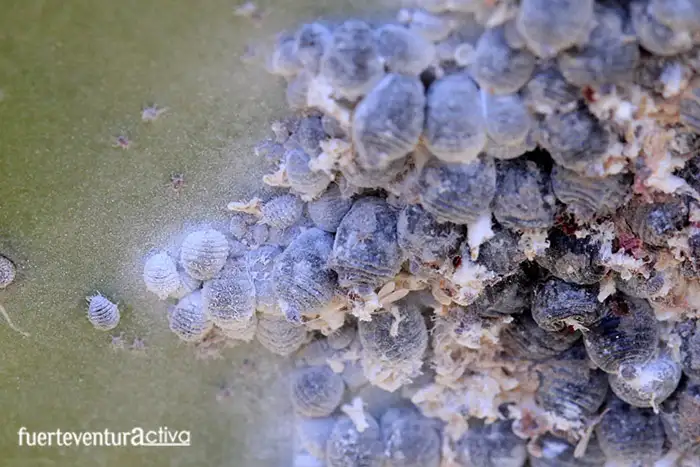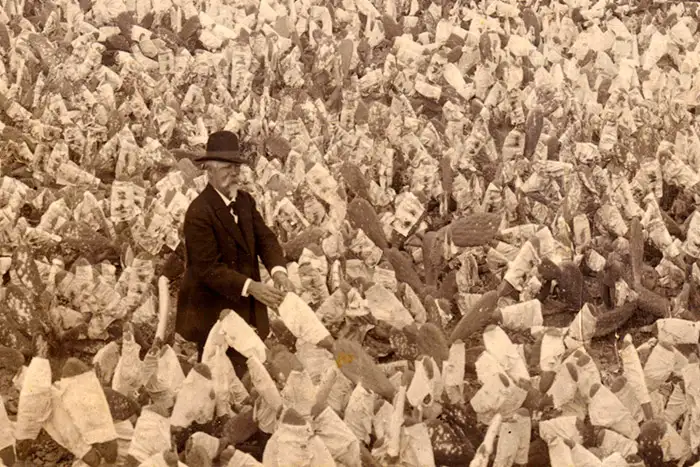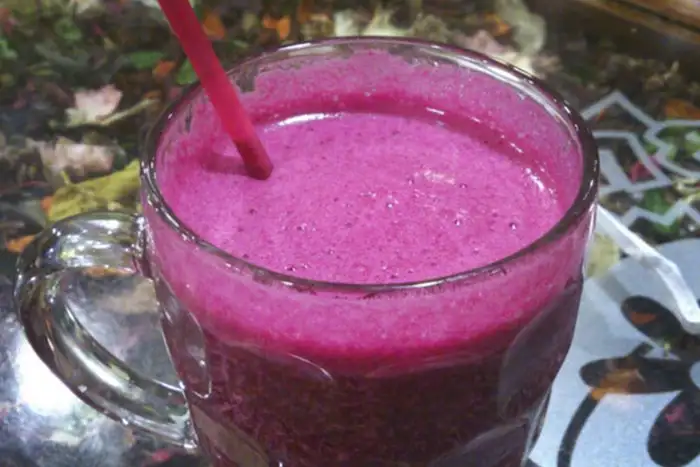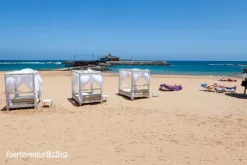LIFE IN FUERTEVENTURA
Tunos and tuneras in Fuerteventura
When we visit a place on a daily basis, we do not pay attention to its peculiarities, the elements that compose it, we do not think about its history. Today we contemplate the exuberant tuneras that grow, wild, in the surroundings of the stately home of Los Coroneles, in La Oliva.
Las tuneras in Fuerteventura
The tuneras or Pencas, as these curious succulent plants are called in the Canary Islands, with wide blades full of beaks, have barely been in the archipelago for a couple of centuries. They have adapted wonderfully, both to the volcanic soils and to the unbeatable climate of the Canary Islands. Their origin is Mexican and they were brought to the island to cultivate the cochineal there.
What is the mealybug?

The mealybug is an insect called by scientists Dactylapius opuntia, which lives in the tuneras. It is easily recognized by the presence of peculiar white spots on its leaves.
It should not be confused with other pests, such as aphids, which plants suffer, or with another type of insect, Kermes vermilio, used since ancient times to make tinctures.
The coloring principle of the cochineal is carmine. It was highly appreciated in the European, English and French markets of the 19th century. With it, different shades of red can be obtained by mixing it with acids, such as lemon juice, or violet shades if it is mixed with various alkalis. The dye extracted is used to manufacture a wide range of products, ranging from the carmine color of lipstick, dyes for clothes, food coloring for chorizo, yogurt, cheeses, desserts … It is known as E-120.
When did the cochineal arrive in the Canary Islands?

Since the end of the eighteenth century, it was already being tried that our country did not depend so much on American imports. Cochineal, at that time, was more valuable than gold. From the Hispanic ports, mainly Mexico, Colombia and Venezuela, tons of cochineal powder were brought annually.
Although it was officially Ildefonso Ruiz del Río, in 1820, who introduced, in Spain, the cultivation of the cochineal and therefore the plantation of tuneras as an economic investment, Fuerteventura already had, at the end of the 18th century, orchards with tuneras. In 1799 Humboldt, indicated the use of tuneras as a living fence to separate properties.
Importance of the cochineal in Fuerteventura

The cultivation of the cochineal had a fundamental role in the island’s economy. On many occasions, vines were removed to plant tuneras, as their care was not as demanding as that of the vines.
Many families, especially in the center of Fuerteventura, subsisted thanks to the collection of cochineal. We just have to take a walk through the municipalities of Tuineje and Antigua to see that there are still planted tuneras from that time.
At the beginning of the 20th century, the institutions took advantage of the Tree Festival to urge residents to plant tuneras on the island. This fragment was published in the Majorero newspaper La Aurora in 1903.
“Those naked mountains must be clothed with vegetation. In them they should put tuneras, fig trees, almond trees, and any other convenient thing. Pájara, like the other towns on the island, will establish the “Tree Festival” annually, and that the boys and girls of the Schools plant, each one, a tree, their parents will ask them to take care of it, (…) ”
Another article in the same newspaper said
“Let’s plant tuneras and plant trees, and the abundance and well-being of the island will be reborn.”
The arrival of artificial dyes caused a decrease in the demand for cochineal. In the middle of the 20th century this activity was almost completely abandoned. However, the tuneras continue to offer us their rich and nutritious fruits.
The tunos

The tunos, or fig peaks as they also call the fruits of the tuneras in the archipelago, are considered a superfood.
From the beginning of the implantation of the tuneras in the Canary Islands, the entire plant was used. The leaves were given to cattle, while its fruits were used both for the extraction of alcohol as a supplement to the diet of the poorest people.
The abundant “harvests” of tunos that the island gave, served to complete the diet, eating them fresh, or dried in the sun, the so-called “porretas”. In summer, patios and roofs were filled with peeled tunos so that by September they would be porretas.
It was a tradition that people set aside what was necessary for their survival and the rest was sold during the Peña festivities to get extra money.
The most abundant variety of tuno in Fuerteventura is the Indian Tuno (Opuntia dillenii).
This cactus can reach 2 meters in height. It is characterized by its large oval green leaves, much less succulent than other varieties of nopales. They are easily identifiable by their leaves, flattened inwards.
The yellow flowers will result in a deep red or purple globose fruit. The pulp of the fruit is red due to its high content of carotenoids and betalains.
The Indian tuno or red tuno, has many uses, both in natural medicine and at the gastronomic level.

Among the medicinal uses we would highlight the use in the treatment of the liver, and the gallbladder, to lower fever, improve respiratory colds, lower blood sugar levels in diabetics. It is also a good urine cleanser, in case of cystitis or kidney stones.
Gastronomically the fruit of the Indian tuno, we can find it in the markets, both natural and prepared in jams, juices and liqueurs.
Where to buy, in Fuerteventura, products made with Indian tunos?
At the local level, Fuertetuno is one of the few companies that produce by hand derivatives of the Indian tuno. You can find a stand in the island’s agricultural markets, such as the Oasis Park Agro-Artisan Market that opens on Sundays from 9:00 a.m. at 2:00 p.m. In Padilla supermarkets you can also buy Indian tuno products.
Fuerteventura3 Fuerteventura8





